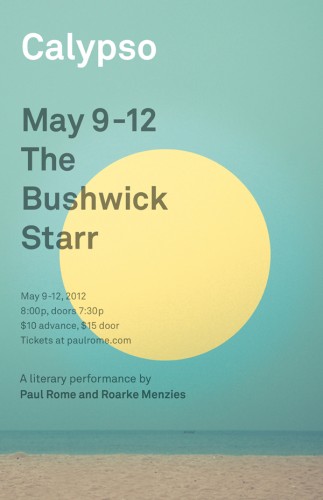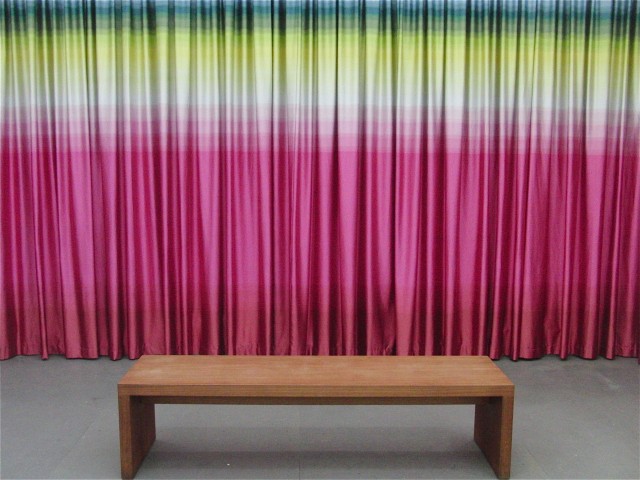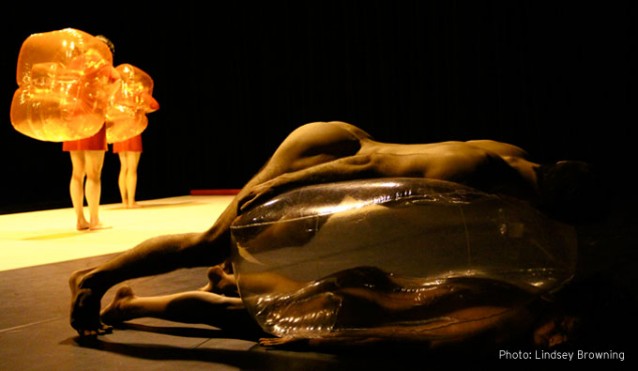
John Jasperse revisits FORT BLOSSOM at New York Live Arts this week
FORT BLOSSOM REVISITED (2000/2012)
New York Live Arts
219 West 19th St. between Seventh & Eighth Aves.
May 9-12, $15-$30, 7:30
May 11, 10:00 pm show added by popular demand
212-691-6500
www.newyorklivearts.org
www.johnjasperse.org
Manhattan-based dancer and choreographer John Jasperse speaks eloquently about his profession both on- and offstage. For more than twenty years, the Bessie Award winner has been challenging and engaging audiences with complex productions that cleverly combine movement, music, visuals, and text in unusual ways, never taking the easy way out. Although he usually performs in his own pieces, he’ll be on the sidelines this week when he brings an updated version of his 2000 work, Fort Blossom, to New York Live Arts. An intellectual and personal exploration of the limits of the human body, the gaze of the viewer, and the effects of time, Fort Blossom was originally performed at the Kitchen by Jasperse, Miguel Gutierrez, Parker Lutz, and Juliette Mapp; the expanded Fort Blossom revisited features Ben Asriel, Lindsay Clark, Erika Hand, and Burr Johnson, with music by Ryoji Ikeda, lighting by Stan Pressner, and costumes by Deanna Berg. There will be a preshow talk with Mapp on May 9 and a discussion following the early show on May 11 with members of the cast and crew; in addition, a bonus late-night 10:00 show on May 11 has just been added by popular demand. A smart, funny, and deeply introspective artist, Jasperse shares his fascinating creative process in our latest twi-ny talk.
twi-ny: What made you want to go back and reexamine Fort Blossom at this time?
John Jasperse: I wasn’t planning on revisiting this work. I have rarely remounted old repertory; I’m more interested in making new work. The occasion to do so came out of an invitation from Lisa Kraus, programmer at Bryn Mawr Presents, who wanted to have my work as part of their 2011–12 presenting season. When it became clear that a new work wasn’t possible, she asked me if there was any work that I wanted to revisit. I immediately thought of Fort Blossom. Very quickly the idea emerged to not only remount the work as it was but to substantially expand it. Subsequently, I contacted Carla Peterson at New York Live Arts to join in the adventure. I have long felt that Fort Blossom was an initial gesture that didn’t actually fully get finished.
Fort Blossom was originally conceived as a work-in-progress towards the first work I made for BAM, which was later called Giant Empty. Fort Blossom was made at a very special juncture that I would be hard pressed to describe concretely. It was made with Miguel Gutierrez, Parker Lutz, and Juliette Mapp, a group of dancers whom I had consistently worked with for a number of years at that point. We rehearsed Fort Blossom for less than two months and presented it at the Kitchen in May of 2000. Then we had a break for the summer. When we returned to rehearsals in the fall to continue work on Giant Empty, it gradually became clear that the “special juncture” of the group had ended and that it was the beginning of the dissolution of that group, that those dancers were getting ready to move on to other things. Giant Empty was the last project I made with Miguel and Parker; Juliette made one more, a duet project called just two dancers. So Giant Empty took a turn of sorts, and it became about our history together in a way — about things coming together and things falling apart.
In the process and also in part in response to the idea of doing my first work for a larger proscenium venue, the simplicity of the design of Fort Blossom got left behind as well as the starkness of the contrasts in the work in favor of an evolving visual environment and a more complicated tapestry where ideas were being approached from multiple angles. I remember a moment of crisis at the end of the process of Giant Empty where there was a discussion in the group about whether or not the men’s duet from Fort Blossom still belonged in Giant Empty. I remember thinking and saying aloud that it represented the last vestige of what I originally wanted the work to be, and as such, it was too problematic to remove it — that it would feel like some sense of me was being removed from the work if I took that choice.
Of course, that is silly, since Giant Empty was also made by me in collaboration with others. I have always felt that it is more interesting to respond to circumstance, to acknowledge and take advantage of what is actually happening rather than to willfully deny that reality and try and thrust some other thing upon the present.
But that willingness to accept things “as they are” is tricky, in part because things aren’t often just or only as they appear at first. In truth, things are always many different ways, all at the same time, so there is also practice in choosing what to align yourself with that is manifest in the present. To speak of how this played out in Giant Empty, to say that things are falling apart, places the focus on their eventual separation and dissolution, to energize that aspect of a potential future in the present. There is also the possibility of looking at the same situation and marveling at the fact that these seemingly different, separate entities are miraculously floating in a dialogue with one another that is perfect just as it is right now, and celebrating that instead of projecting some perceived inevitable fall from grace upon them. The shifts in how we see something (in how we perceive a body, a relationship, or the present moment) are clearly manifest as such in Fort Blossom, and I think after all these years, I have finally realized that there is a profound aspect of hope embedded in Fort Blossom, and in its simplest terms, it is a hope for a multiplicity of connectivity that isn’t compartmentalized and exists in a space beyond shame.
So much emphasis gets placed on the naked men, but it is very important to remember that they cohabitate a space with clothed women. The four figures are together with the simple contrast throughout the hour. The difference (which is initially a difference of division) remains throughout the work, but there is a way in which it becomes both relevant and irrelevant, and I think this is key to the work.
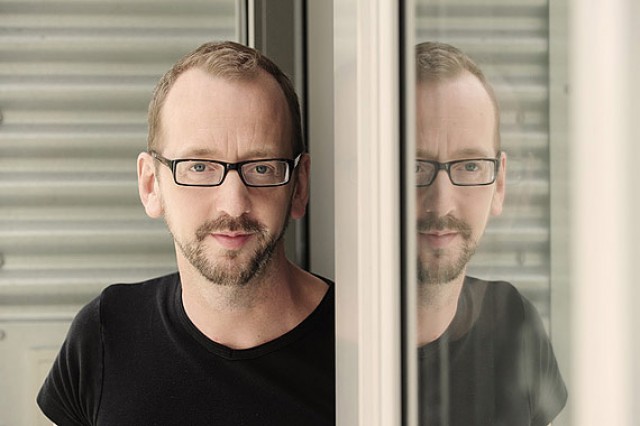
Bessie Award winner John Jasperse speaks openly and honestly about the multiple sides of dance (photo by Chris Taggart)
twi-ny: What have you discovered about yourself and the work in revisiting it?
John Jasperse: I think this work has again taught me something about the power of hope. I would be remiss to not mention something here about aging. I was originally in this work and chose to recast it without me in it. I thought long and hard about the young body vs. older body. I have been concerned that I would be criticized for not being in it this time around, for casting it with younger men. I was clear that redoing Fort Blossom with me and a noticeably younger man would add a whole other dimension to the work that I felt would complicate matters without knowing what to do with this complication. When we made Fort Blossom, it was not with a notion of an idealized body; quite the contrary, it was with the bodies that we had which happened to be of a certain age. The idea to recast the work with peers of my own age did occur to me, to have our bodies reflect the passage of time, but I wasn’t able to complete the picture in my mind of who this would be. And some of the dancing in the second half of the work was challenging for me at the time twelve years ago and would be even more challenging for me now.
So I chose to work with people who were roughly the same age as we were then. Doing it this time around with a younger cast than my current age and being a director from outside, not a dancer in the work, I was concerned that I would be shifted into a role of voyeur. But again, this brings me back to a practice of how you look at something, of what aspect you invest in. And I have found that this can help define both how your experience it and how others experience your intention and your presence in that role. In Fort Blossom revisited (2000/2012), I have really been able to step up to the plate as a director in a way that I have seldom felt in making a new work, because I understand from memory what this terrain is; I’m not trying to invent it all from ether. So while we are trying things, it is as if we have a script for a play and we are playing with how we might interpret it. Or we are developing a scene that is missing and needed by the preexisting context. So I’m more easily able to say what I want because the field is much more delimited than in a totally new work. Contrary to feeling like this is stifling, I have noticed what a relief that is to others to be directed in that way, and I’ve wondered how this experience will color my going back into the studio on new work, where there isn’t a “preexisting script” of sorts.
twi-ny: You’re one of the busiest dancer-choreographers out there; in the last few years alone, you’ve done Becky, Jodi and John at the former Dance Theater Workshop, Truth, Revised Histories, Wishful Thinking, and Flat Out Lies at the Joyce, Misuse Liable to Prosecution and Canyon at BAM, and now Fort Blossom revisited (2000/2012). Are you just constantly going nonstop? I’m getting a picture of you just running and running and running around, like you do in Canyon.
John Jasperse: I’m not sure that I’m any busier than any other dance artist. It is not an easy profession. I am aware of a balancing act, which could also be described as a stretching of bringing together circumstances that don’t naturally meet. That tension of the stretching is likely shared by any dance maker trying to make work today, and certainly by any artist working in New York City. It takes a lot of stamina, or perhaps a better word is “tenacity,” to keep that going. But I feel like I’m a dance artist/choreographer and I want to be doing that right now while I have some vibrancy in that. It is important to find ways to regenerate, and it is important to know that the well can run dry. I’m aware that I’m not so good at pushing back to make the space that I need for regeneration, and I’m aware that can take a toll on the work. I’m also aware that you as an individual are the only person who can take that responsibility on, as the machine of nonprofit arts production is hungry and it must be fed, so there is enormous momentum pushing towards working 24/7.
twi-ny: In regard to nonprofit arts production, several years ago at a post-performance talk you very openly and honestly discussed how difficult it is to make a living as a dancer in New York City. Are things getting better or worse these days?
John Jasperse: I worry that my dealing with these issues and trying to talk openly and honestly about them sounds like I am whining about my situation. I am incredibly grateful for the luck and good fortune that I have had as a dance maker in being able to do what I do. I feel very fortunate to have people interested in the worlds that I create, and I am grateful that this recognition has allowed me to keep working.
I feel that there are shifts in the current climate that ease some of the above pressures and shifts which are more challenging from a pragmatic standpoint. Doris Duke Charitable Trust just announced their first in a series of substantial unrestricted grants for performing artists, US Artists has developed a fellowship program for artists which is filling a gap made in part by the decrease in individual artist funding when the NEA stopped funding artists directly. Many of these opportunities are one-time grants. They create substantial support in a delimited period but don’t/can’t address the ongoing concerns of sustaining a practice over a long period of time.
I would like to see justice in general in the world. I’d like to think that the work that I make is participating in this greater collective effort. Since money is our primary mutually agreed system of valuation, I would like to see more ethics reflected in how money gets spent in the domain of culture. A budget is a value system, and while I have to accept some level of what value others place on things (including the value of my own work to them), I also feel that I need to be proactive in asserting my own values and ethics in budgets, which I am at least partially in control of.
twi-ny: When you do get a chance to slow down and take a step back, what kinds of things do you like to do when you’re not dancing or choreographing?
John Jasperse: I’m still trying to figure that out. I have some energy over the last years in gradually trying to make a calmer living space. I think this is partly trying to create the space for the slowing down to occur in.
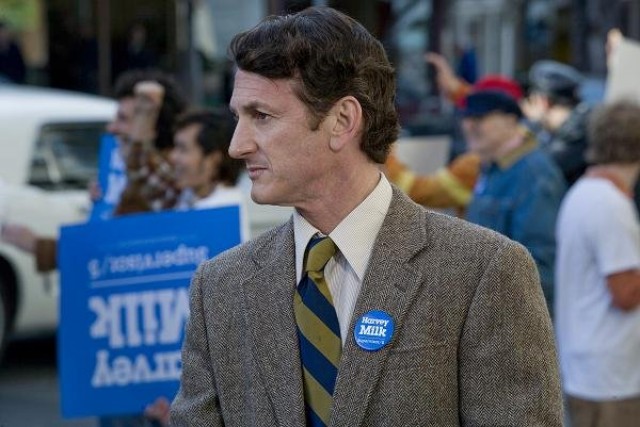
 Gus Van Sant’s Milk is a solid if surprisingly standard biopic focusing on the last eight years in the life of Harvey Milk, the gay activist and politician who was assassinated in 1978. Van Sant (Drugstore Cowboy, To Die For, Good Will Hunting) follows the eventual unofficial Mayor of Castro Street (Sean Penn) as he moves to San Francisco with his much younger partner, Scottie Smith (James Franco), and sets up a camera shop that soon becomes an important meeting ground for the local gay community, fighting for equal rights and supporting Milk as he continually campaigns for public office. The battle hits its high point in 1978 when Milk takes on John Briggs (Denis O’Hare) and the Briggs Initiative, also known as Proposition 6, which sought to take away existing employment rights from gays and lesbians in the California public school system, eerily reminiscent of the recent battle over Proposition 8 there. Although Milk was a rallying figure — his opening mantra was always “My name is Harvey Milk, and I am here to recruit you!” — the film never quite takes off the way it wants to, instead becoming too reverential and melodramatic. Penn, who won an Oscar for his portrayal, is good but subdued in the lead role; the best performance comes from Josh Brolin as Dan White, Milk’s main adversary among the SF supervisors. Milk is screening May 9 and 19 at MoMA as part of the series “Focus Features: 10th Anniversary Salute,” which pays tribute to the New York-based distributor responsible for such cutting-edge independent films as Michel Gondry’s Eternal Sunshine of the Spotless Mind, Lisa Cholodenko’s The Kids Are All Right, Sofia Coppola’s Lost in Translation, and David Cronenberg’s Eastern Promises, all of which are part of this festival, which runs through May 20.
Gus Van Sant’s Milk is a solid if surprisingly standard biopic focusing on the last eight years in the life of Harvey Milk, the gay activist and politician who was assassinated in 1978. Van Sant (Drugstore Cowboy, To Die For, Good Will Hunting) follows the eventual unofficial Mayor of Castro Street (Sean Penn) as he moves to San Francisco with his much younger partner, Scottie Smith (James Franco), and sets up a camera shop that soon becomes an important meeting ground for the local gay community, fighting for equal rights and supporting Milk as he continually campaigns for public office. The battle hits its high point in 1978 when Milk takes on John Briggs (Denis O’Hare) and the Briggs Initiative, also known as Proposition 6, which sought to take away existing employment rights from gays and lesbians in the California public school system, eerily reminiscent of the recent battle over Proposition 8 there. Although Milk was a rallying figure — his opening mantra was always “My name is Harvey Milk, and I am here to recruit you!” — the film never quite takes off the way it wants to, instead becoming too reverential and melodramatic. Penn, who won an Oscar for his portrayal, is good but subdued in the lead role; the best performance comes from Josh Brolin as Dan White, Milk’s main adversary among the SF supervisors. Milk is screening May 9 and 19 at MoMA as part of the series “Focus Features: 10th Anniversary Salute,” which pays tribute to the New York-based distributor responsible for such cutting-edge independent films as Michel Gondry’s Eternal Sunshine of the Spotless Mind, Lisa Cholodenko’s The Kids Are All Right, Sofia Coppola’s Lost in Translation, and David Cronenberg’s Eastern Promises, all of which are part of this festival, which runs through May 20.

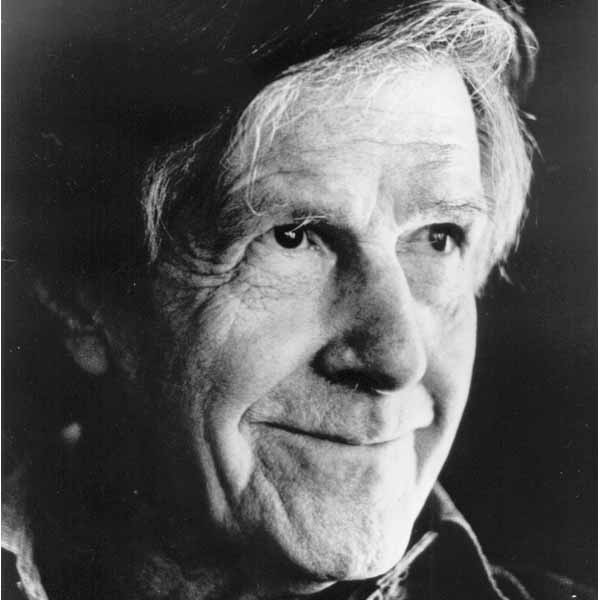
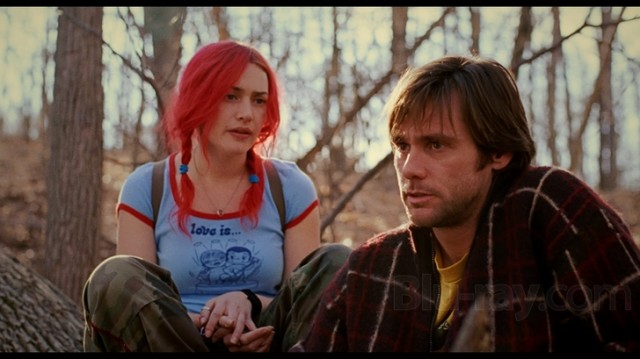
 This brilliant work comes from the warped mind of Charlie Kaufman, the sensational scribe behind Being John Malkovich, Adaptation., and Confessions of a Dangerous Mind. (Chris Elliott fans will get a kick out of knowing that Kaufman was a writer for Get a Life, one of the great warped series of all time.) Eternal Sunshine of the Spotless Mind stars Jim Carrey and Kate Winslet as a couple looking to erase each other from their memories by . . . ah, don’t worry what it’s about. The less you know, the better. Just be prepared for a visual, metaphysical spectacle that will both exhilarate and depress you, filling you with wonder and amazement. The only thing keeping it from perfection is the ordinariness of the subplot involving Elijah Wood. Kaufman and director Michel Gondry (The Science of Sleep) mix in a little Punch-Drunk Love and Groundhog Day, both of which also featured former television comedians in more serious roles, but end up with something wholly original and, quite simply, one of the most romantic movies we have ever seen.Eternal Sunshine is screening May 9 and 19 at MoMA as part of the series “Focus Features: 10th Anniversary Salute,” which pays tribute to the New York-based distributor responsible for such cutting-edge independent films as Gus Van Sant’s Milk, Lisa Cholodenko’s The Kids Are All Right, Sofia Coppola’s Lost in Translation, and David Cronenberg’s Eastern Promises, all of which are part of this festival, which runs through May 20.
This brilliant work comes from the warped mind of Charlie Kaufman, the sensational scribe behind Being John Malkovich, Adaptation., and Confessions of a Dangerous Mind. (Chris Elliott fans will get a kick out of knowing that Kaufman was a writer for Get a Life, one of the great warped series of all time.) Eternal Sunshine of the Spotless Mind stars Jim Carrey and Kate Winslet as a couple looking to erase each other from their memories by . . . ah, don’t worry what it’s about. The less you know, the better. Just be prepared for a visual, metaphysical spectacle that will both exhilarate and depress you, filling you with wonder and amazement. The only thing keeping it from perfection is the ordinariness of the subplot involving Elijah Wood. Kaufman and director Michel Gondry (The Science of Sleep) mix in a little Punch-Drunk Love and Groundhog Day, both of which also featured former television comedians in more serious roles, but end up with something wholly original and, quite simply, one of the most romantic movies we have ever seen.Eternal Sunshine is screening May 9 and 19 at MoMA as part of the series “Focus Features: 10th Anniversary Salute,” which pays tribute to the New York-based distributor responsible for such cutting-edge independent films as Gus Van Sant’s Milk, Lisa Cholodenko’s The Kids Are All Right, Sofia Coppola’s Lost in Translation, and David Cronenberg’s Eastern Promises, all of which are part of this festival, which runs through May 20.